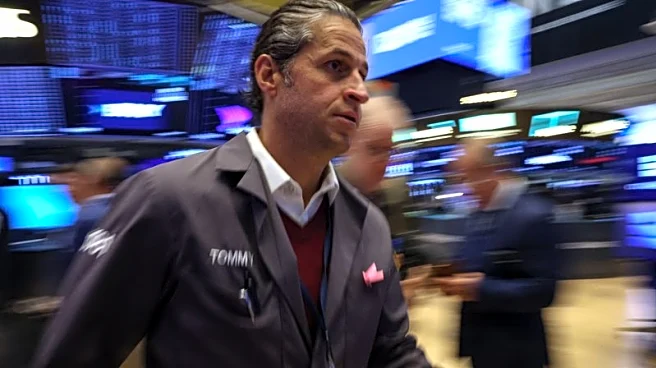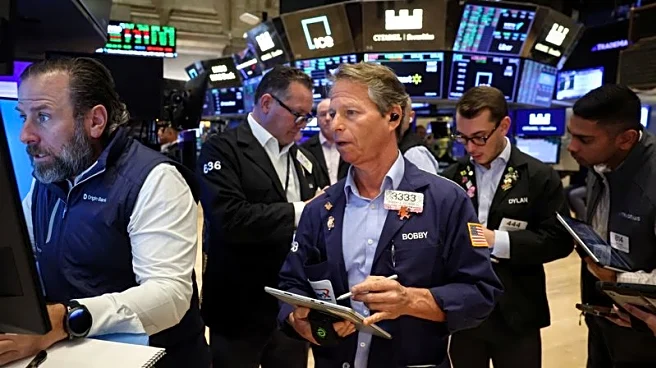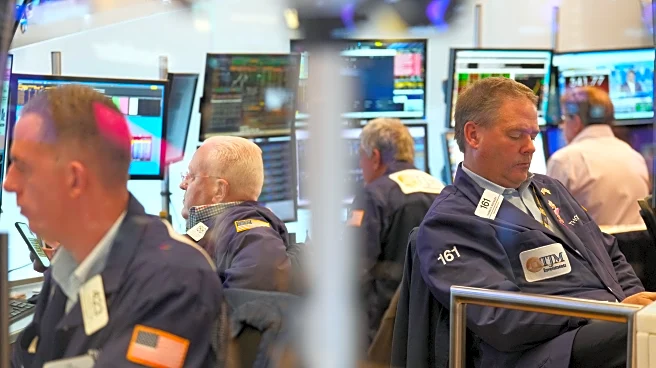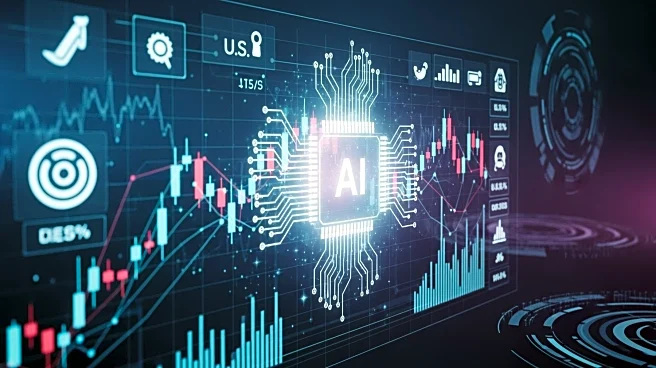What's Happening?
The S&P 500 index experienced an increase on Monday, despite the ongoing government shutdown reaching its 34th day, approaching the record length of 35 days set during President Trump's first term. The index's rise is attributed to significant gains from
companies like Nvidia and Amazon. Amazon recently secured a $38 billion deal with OpenAI to provide Amazon Web Services capacity powered by Nvidia GPUs. However, the shutdown has raised concerns about its potential economic impact, with Goldman Sachs warning that it could be one of the most damaging in history. The bank predicts a 1.15% reduction in fourth-quarter GDP on a quarter-over-quarter annualized basis, with a potential 1.3% recovery in the first quarter of 2026 as delayed federal actions are implemented.
Why It's Important?
The ongoing government shutdown poses significant risks to the U.S. economy, potentially affecting various sectors. The warning from Goldman Sachs highlights the potential for a substantial economic downturn if the shutdown continues. Disruptions to government programs, such as SNAP benefits and air travel, could have widespread effects on consumers and businesses. The stock market's resilience, driven by tech giants like Nvidia and Amazon, underscores the sector's critical role in the current economic landscape. However, the broader economic implications of the shutdown could lead to increased volatility and uncertainty in the markets, affecting investor confidence and economic stability.
What's Next?
As the shutdown continues, stakeholders are closely monitoring the situation for any signs of resolution. Prediction platforms like Polymarket suggest a 52.3% chance of the shutdown extending beyond November 16, with a 13.3% chance of reopening between November 4 and 7. The outcome of these predictions could influence market dynamics and economic forecasts. Policymakers and businesses are likely to advocate for a swift resolution to mitigate the economic impact and restore confidence in government operations. The ongoing situation may prompt discussions on long-term solutions to prevent future shutdowns and ensure economic stability.















